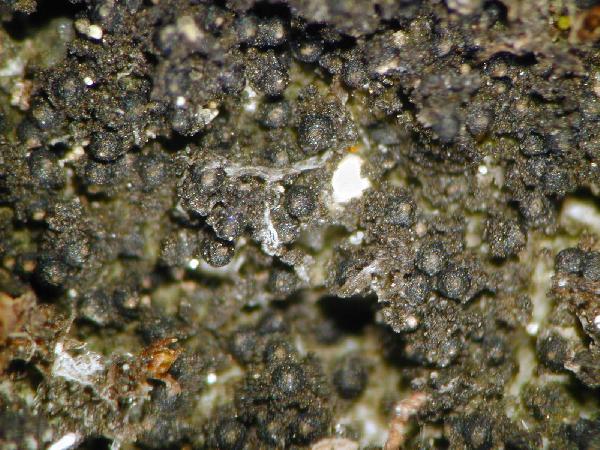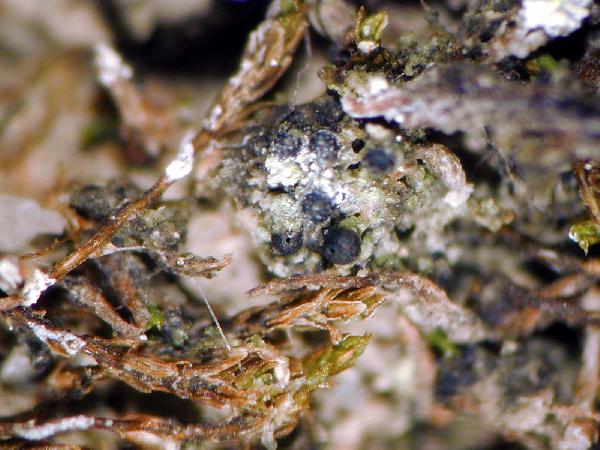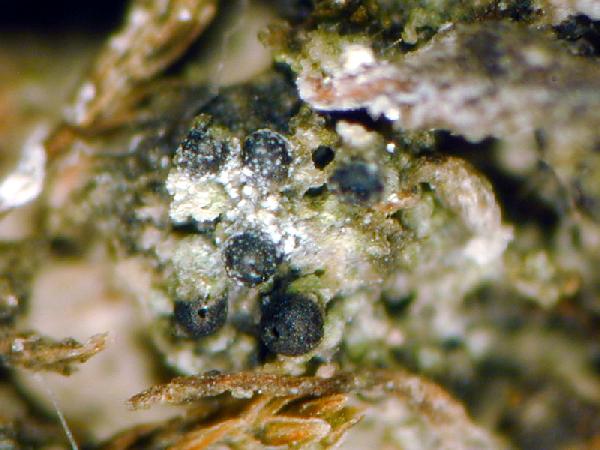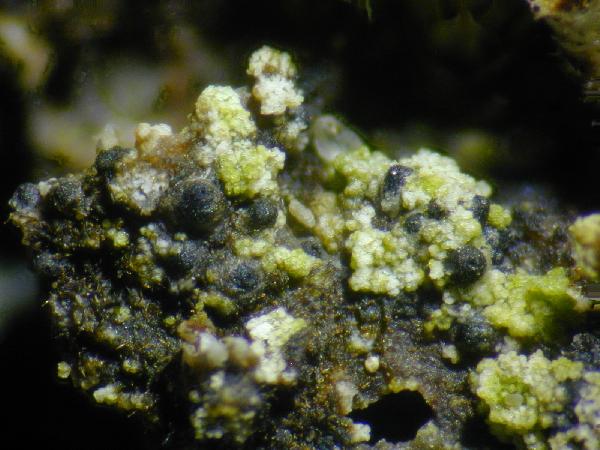Verrucaria bryoctona (Th. Fr.) Orange
Lichenologist, 23: 3, 1991. Basionym: Thelidium bryoctonum Th. Fr. - Bot. Notiser: 11, 1863
Synonyms:
Distribution:
Description: Thallus crustose, thinly episubstratic, grey-green to yellowish, granular-verruculose, composed of 14-40 µm wide goniocysts surrounded by an unpigmented hyphal coat. Perithecia black, but often with a greyish tinge when young (due to a thin, unpigmented surface layer), globose to broadly ovoid, 0.1-0.3 mm across, at first largely immersed in the thallus, later slightly projecting. Involucrellum absent; exciple 15-25 µm thick, dark-pigmented throughout, the pigment brown to reddish brown, K+ dark greyish brown; hamathecium of branched, 20-25 µm long periphysoids, interascal filaments absent; hymenial gel hemiamyloid, I+ red (I+ blue at very low concentrations of I), K/I+ blue. Asci 8-spored, broadly clavate, bitunicate-fissitunicate, thick-walled above when young, with a small ocular chamber, Verrucaria-type, 50-60 x 14-16 µm. Ascospores 1-celled (overmature spores sometimes 2-3-septate), hyaline, narrowly ellipsoid to subclavate (wider above the middle), (13-)18-25(-29) x (5-)6-7(-8) µm, often truncate at the ends and with gelatinous appendages measuring 2-3.5 x c. 1 μm. Photobiont chlorococcoid. Spot tests: thallus K-, C-, KC-, P-, UV-. Chemistry: without lichen substances.
Note: a pioneer, ephemeral species growing on base-rich soil and terricolous, moribund bryophytes; widespread in Western Europe, with a few records from the Eastern Alps (Austria). To be looked for in the Italian Alps.
Growth form: Crustose
Substrata: soil, terricolous mosses, and plant debris
Photobiont: green algae other than Trentepohlia
Reproductive strategy: mainly sexual
Pioneer species

Predictive model
Herbarium samples
Growth form: Crustose
Substrata: soil, terricolous mosses, and plant debris
Photobiont: green algae other than Trentepohlia
Reproductive strategy: mainly sexual
Pioneer species

Predictive model
| Herbarium samples |
 INDEX FUNGORUM
INDEX FUNGORUM
 GBIF
GBIF
 DOLICHENS
DOLICHENS






